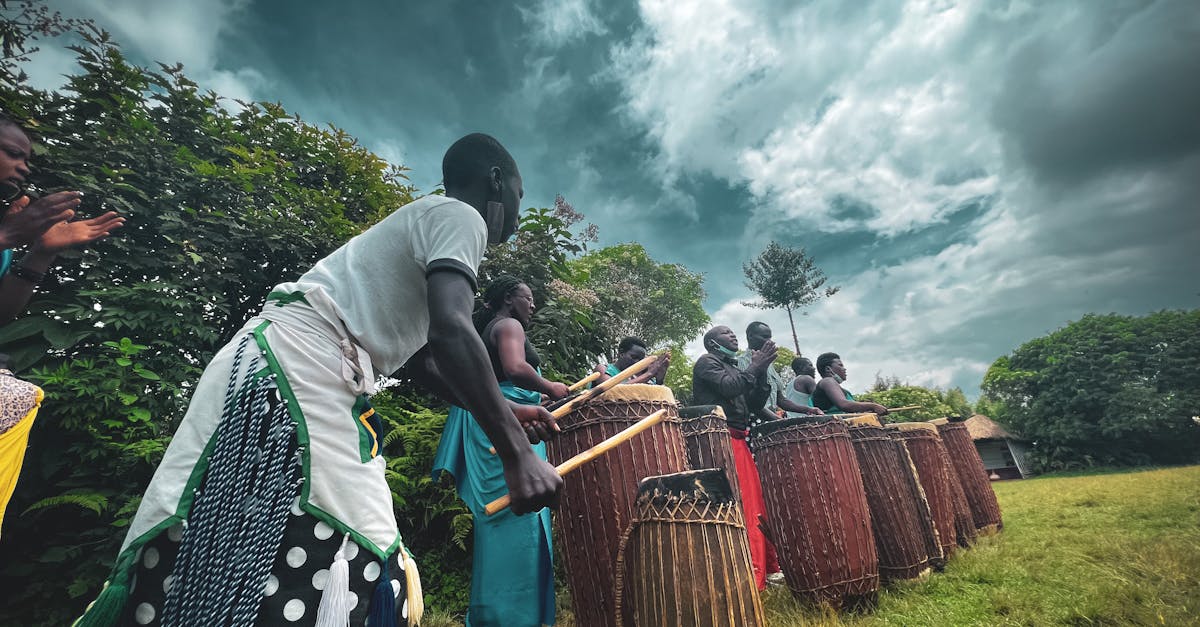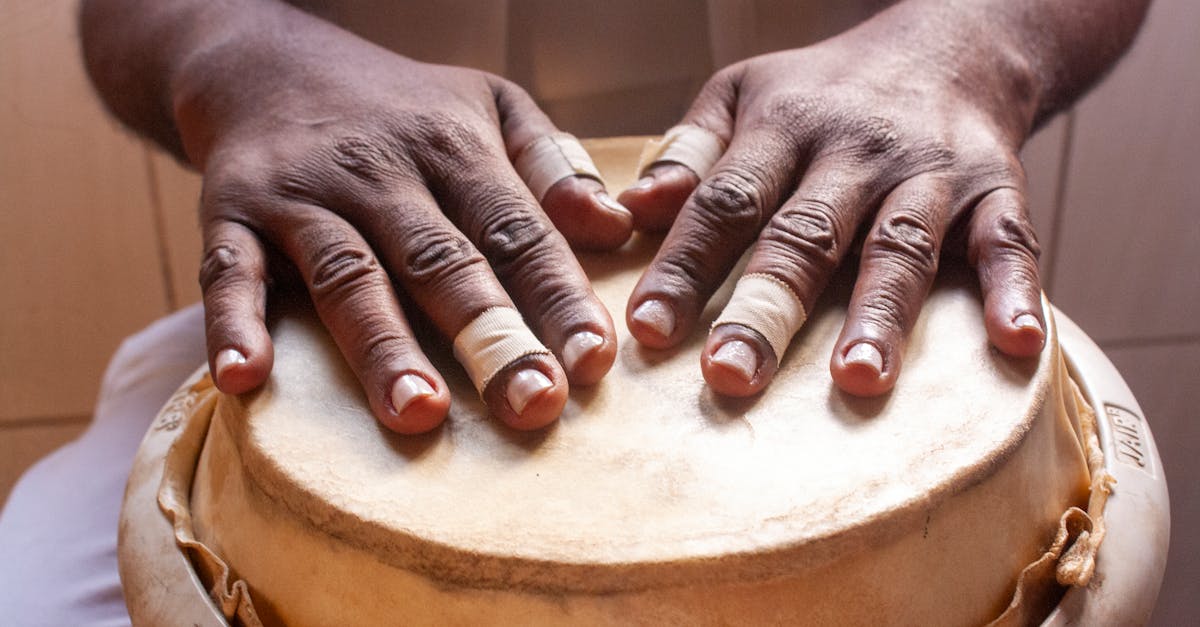Global Harmonies Unveiled Exploring Musical Traditions
Introduction
Music has always been a universal language that transcends borders and cultures. Across the globe, diverse musical traditions provide cultural identity and are a repository of history. From the rhythmic drumming in Africa to the soothing sitar in India, music embodies collective experiences and emotions. Globalization has intensified the cross-cultural exchange of musical motifs, leading to a rich blend of harmonies. Musical traditions are not just relics of the past; they actively redefine contemporary music. As we delve into these global harmonies, we uncover fascinating narratives about people and places that celebrate diversity.
Advertisement
African Rhythms The Sound of Origin
Africa is often hailed as the cradle of musical expression, with its rhythmic patterns forming the backbone of modern music. In traditional African societies, drumming plays a vital role in ceremonies, storytelling, and communication. The djembe drum, originating from West Africa, showcases versatile rhythms that stir the soul.
These **rhythms, inherently lively and intricate, have influenced genres like jazz, rock, and hip-hop. Accordingly, African music’s core themes—community and interconnectedness—continue to resonate worldwide. In many ways, exploring African rhythms is akin to tracing the roots of the modern musical tapestry.
Advertisement
The Allure of Indian Classical Music
India boasts a rich tradition of classical music, deeply rooted in the spiritual and philosophical realms. Its two main forms, Hindustani and Carnatic, have existed for thousands of years, thriving through oral traditions. Ragas and talas form the heart, defining the melody and rhythm, respectively. The sitar, tabla, and bansuri are some of the iconic instruments that craft enchanting soundscapes. Through meditative performances, Indian classical music invites listeners to embark on an introspective journey. This tradition's enduring appeal demonstrates its adaptability and ability to captivate global audiences by inspiring fusion with Western music.
Advertisement
European Classical Music A Historical Journey
European classical music, spanning centuries, offers a tapestry of evolution from Baroque to Romantic and beyond. Visionary composers like Bach, Mozart, and Beethoven laid the foundations, while later artists further expanded the expressive boundaries. This era birthed compositions that captured the zeitgeist of their times—from grand symphonies to intimate sonatas. European classical music's emphasis on form, technique, and innovation has left an indelible mark on music education worldwide. As performers and audiences continue to cherish these timeless compositions, the essence of Western classical music is refreshed and rejuvenated in modern contexts.
Advertisement
The Rhythmic Pulse of Latin Music
Latin music, with its vibrant energy and diverse influences, covers a wide spectrum, including salsa, samba, and reggaeton. Born from the fusion of Indigenous, African, and European cultures, these genres pulsate with warmth and passion. Instruments such as maracas, bongos, and the piano bring melodies to life, encapsulating emotions through intricate rhythms. Throughout history, Latin music has celebrated love, resilience, and community, reflecting the spirit of its people. Its infectious energy has crossed borders, influencing everything from pop to world music, unifying dance floors across the globe.
Advertisement
Exploring the Mystical Sounds of the Middle East
The Middle East is a treasure trove of rich, mystical musical traditions, with roots tracing back to ancient civilizations. Instruments like the oud, qanun, and ney play vital roles in crafting the distinct soundscapes characteristic of Arabic music. Modes known as *maqamat* lend depth and diversity, evoking various emotions. Ottoman Empire's influence and cultural exchanges across the Silk Road contributed to a fusion of musical styles. This confluence produced versatile compositions, meeting contemporary demand for immersive and reflective sound experiences. Today, Middle Eastern music inspires global artists to experiment with its unique tonalities.
Advertisement
East Asian Musical Elegance and Tradition
The serene harmonies of East Asia—found in Chinese, Japanese, and Korean music—offer a sense of tranquility and reflection. Instruments like the guzheng, koto, and gayageum embody these musical traditions, evoking imagery of nature and harmony with their characteristically melodic tone. Traditional compositions capture historical themes and cultural narratives, reflecting on communal ideals and values. These traditions have passed through generations, and in modern times, continue to inspire fusion projects, producing innovative sonic experiences that marry the old with the new. As East Asian artists gain global prominence, the world embraces the elegance of these ancient musical forms.
Advertisement
Indigenous Music Preserving Ancient Narratives
Indigenous communities worldwide have long used music to preserve and communicate their unique cultural identities. In Australia, the didgeridoo echoes the landscapes of the Outback, conveying stories of ancestral land. In North America, Native American tribes celebrate their spiritual connection with nature through drumming and chanting, often in ceremonial rituals. As these communities face the challenges of modernization, cultural preservation becomes vital. Fortunately, global collaborative efforts increasingly recognize and celebrate these ancient musical narratives, ensuring their legacy endures. Their vibrant and spiritual essence enriches the global musical dialogue.
Advertisement
Cultural Fusion the Future of Global Music
Today, global harmonies are evolving through cultural fusion, creating new, hybrid musical genres. Artists like Shakira and Yo-Yo Ma exemplify blending diverse traditions to create innovative sounds that resonate universally. As technology facilitates cross-border collaborations, musicians have unprecedented opportunities to explore and blend different harmonies. Festivals showcasing world music are gaining popularity, enabling artists and audiences worldwide to experience varied traditions firsthand. This evolution illustrates music’s role as both a bridge and an expression of shared humanity. As global harmonies continue to unfold, they promise endless possibilities for musical innovation and cultural exchange.
Advertisement
Conclusion
Exploring global harmonies unveils a breathtaking mosaic of cultural identities, traditions, and stories. Music transcends divisions, offering a unique lens through which humanity’s rich diversity can be celebrated and shared. As traditions intermix and evolve, they not only preserve historical narratives but also fuel artistic innovation. At its core, music reminds us of our interconnectedness, inspiring collaboration and understanding across cultures. In an ever-changing world, global harmonies continue to resonate, promising a future rich in cultural appreciation and creative possibilities.
Advertisement







